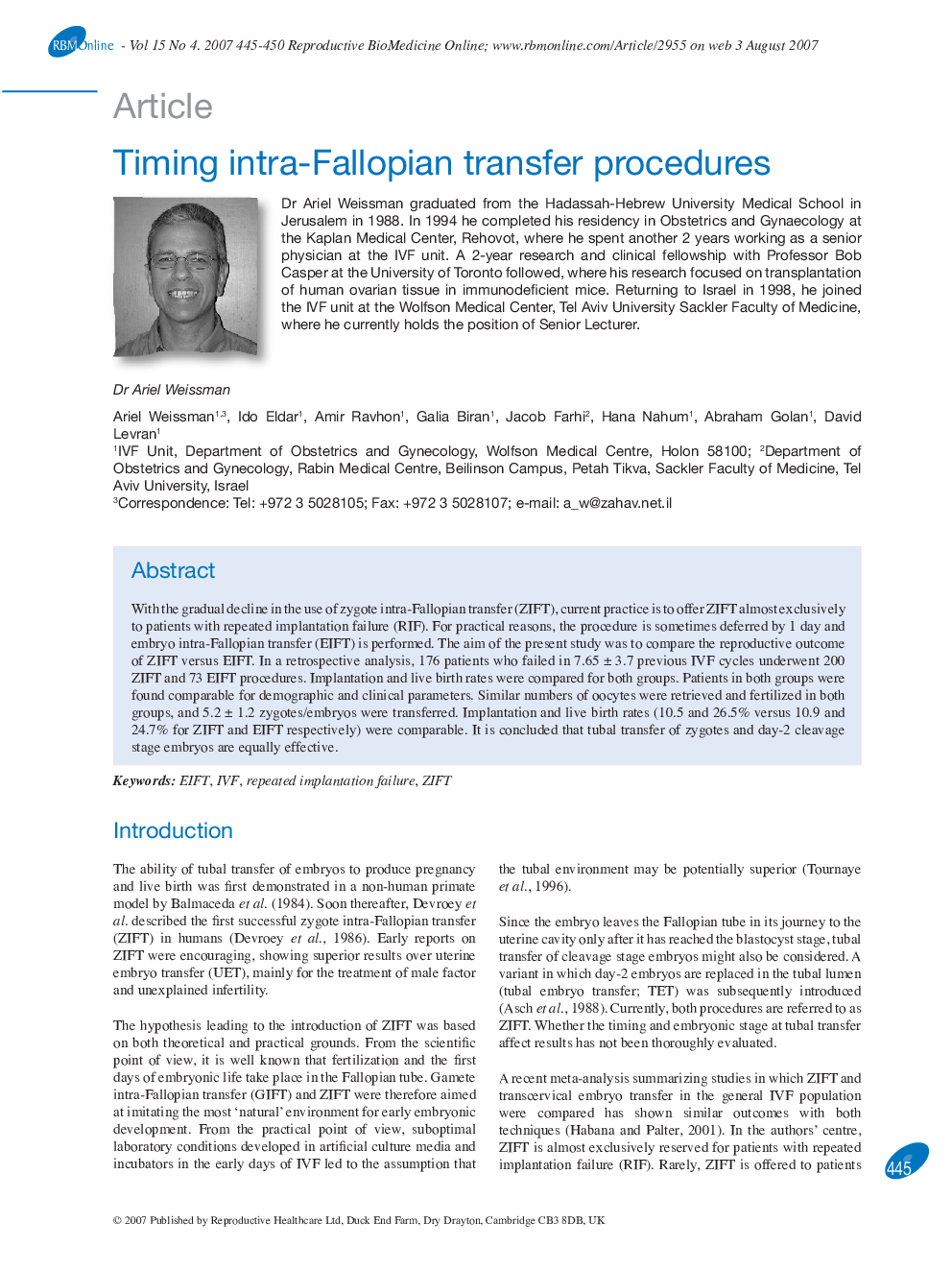| Article ID | Journal | Published Year | Pages | File Type |
|---|---|---|---|---|
| 3972502 | Reproductive BioMedicine Online | 2007 | 6 Pages |
With the gradual decline in the use of zygote intra-Fallopian transfer (ZIFT), current practice is to offer ZIFT almost exclusively to patients with repeated implantation failure (RIF). For practical reasons, the procedure is sometimes deferred by 1 day and embryo intra-Fallopian transfer (EIFT) is performed. The aim of the present study was to compare the reproductive outcome of ZIFT versus EIFT. In a retrospective analysis, 176 patients who failed in 7.65 ± 3.7 previous IVF cycles underwent 200 ZIFT and 73 EIFT procedures. Implantation and live birth rates were compared for both groups. Patients in both groups were found comparable for demographic and clinical parameters. Similar numbers of oocytes were retrieved and fertilized in both groups, and 5.2 ± 1.2 zygotes/embryos were transferred. Implantation and live birth rates (10.5 and 26.5% versus 10.9 and 24.7% for ZIFT and EIFT respectively) were comparable. It is concluded that tubal transfer of zygotes and day-2 cleavage stage embryos are equally effective.
